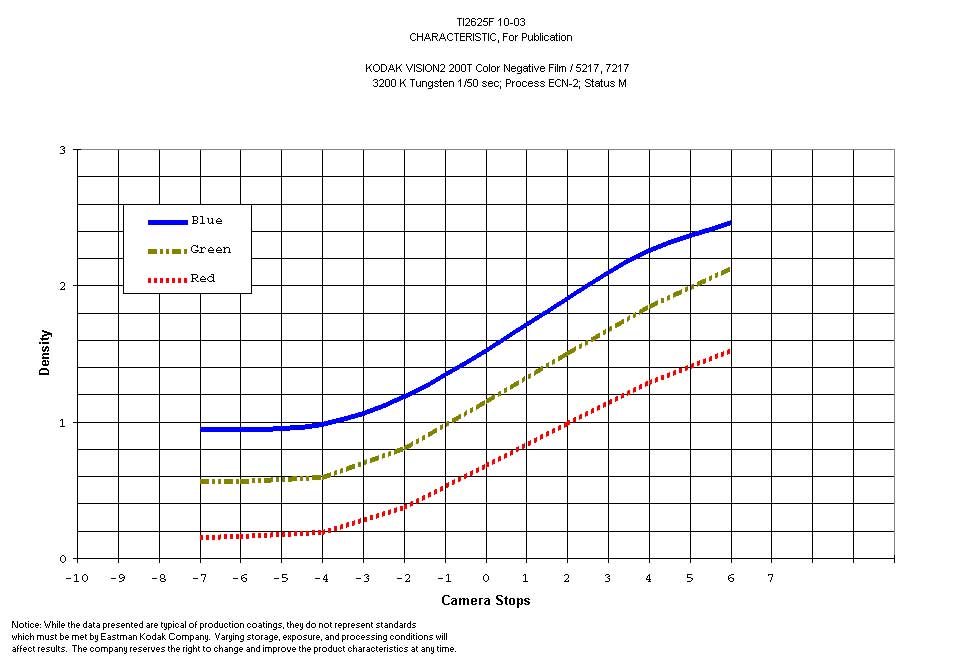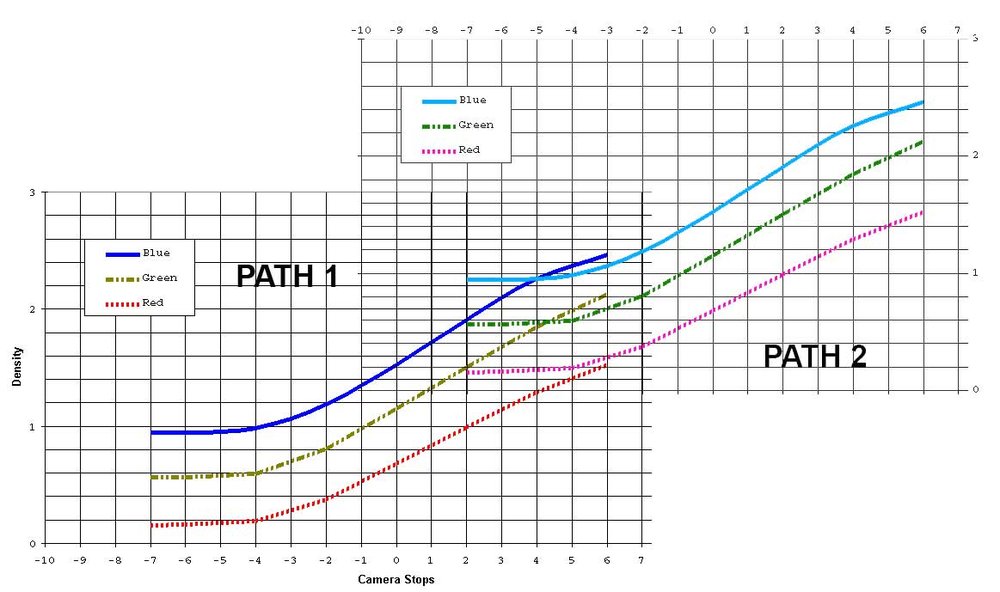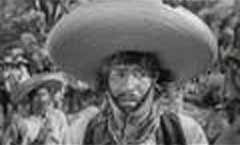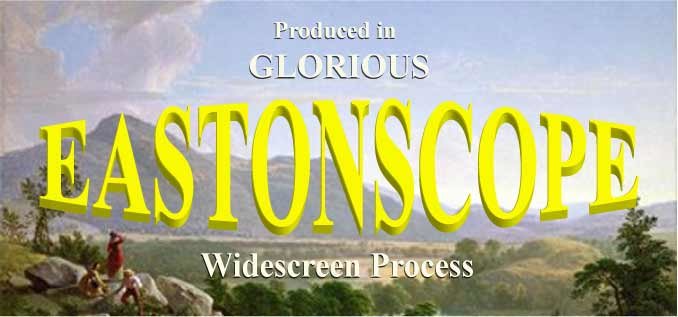
Paul Bruening
Premium Member-
Posts
2,837 -
Joined
-
Last visited
Everything posted by Paul Bruening
-
I think I've come up with a way to cheaply (relatively) jam two Mitchells together to get cine HDRI. What I'm curious about is the intersecting values of the 2 paths of film. I've included two graphs. One is Kodak's exposure range graph for 5217. The other is two versions of that graph overlapped, representing the two paths. The format I have in mind is 2-perf converted by 4K scans and combined in computer. 1. Do you think the graphs need to be further compressed together, expanded apart (by how much) or are they about right as they are? 2. How many useful stops total do you think can be pulled from this approach? 3. How many stops difference would you ND the two units by? 4. Where on the overlapped graph would you place a single median exposure point for a.) sunny day (top of the lens) and b.) well lit by street lamps night exteriors (bottom of the lens (such as in David M's recent Chicago shots))?
-
I'm seeing more thread advertising lately. I guess this indicates increasing desperation in the market. Giving moderators power to remove those threads seems like a way to reduce that since you can't catch them until they have already posted.
-
Will you be hacking some code for this, Ben? You could get the cables made in Asia for pretty cheap if you could anticipate market demand. Once you square a cable deal a package of apps could be used. These DSLR movie cams are going to get more prolific, I expect, more so as the technology gets better.
-
How to do a negative cut?
Paul Bruening replied to Maximilian Schmige's topic in Film Stocks & Processing
I remember our jokes, "If I miss a splice they'll just have to show my movie with blood spatters printed in." Missing a splice is a big thing since even with bail-outs the black overlap may show in the projected image. That's why a good neg cutter is rare. I was fascinated that any cutter had a Wikipedia presence. Thanks for the link, John. I had never even heard of her. -
How to do a negative cut?
Paul Bruening replied to Maximilian Schmige's topic in Film Stocks & Processing
AB rolling is required on thin frame lines. The splices are reversed as left and right per each cut so that the overlap is hidden by the opaque sections of each roll. Even when the frame lines are thick enough ABs buy the cutter the chance to bail-out missed splices by moving the sync-missed frame or frames over to the other roll, restoring the sync. The print man knows you goofed when he sees that one frame all by itself. What format neg have you cut? I've only cut 16mm neg on AB way back in my first round through college. Fortunately, we had a brand new, motorized splicer that precisely ground off the emulsion, making better splices than a scraper type. You, basically, become a glue huffer as a neg cutter. You don't huff much at a time. But, you get it in steady doses all through each session. -
Okay. I actually decided to use my brain on this instead of just bugging you fellas for an answer. I'll never get more stops from the film because when the MTF curves come to an end at both corners of the graph, that's all she'll do. I can get more stops out of the sensor since it already has a lower dynamic range than the film. I can also get the illusion of more stops from the film, knowing its just a trick. That also means I'll be goofing with the knee and shoulder of the film's MTF. I do get better and tunable latitude by HDRI scanning. But, the buck still stops at the corners of the film's graph.
-
Latitude and dynamic range are intertwined in single exposures. Doesn't HDRI in my scans push both? Won't I get more stops out of the film as well as better details in lows and highs? Or am I missing something about the MTF of film?
-
How to do a negative cut?
Paul Bruening replied to Maximilian Schmige's topic in Film Stocks & Processing
AB rolling would give him wiggle room. It wouldn't keep the lab techs from laughing at him. -
This is a fascinating thread, fellas. Please, keep it coming. Does this mean that I could take the low box-office potential movie that I'm currently making and make more money from it by it being a flop if I exaggerate the promotions and find a distributor with wringing hands and dollar signs in his eyes? Max Bialystock, you madman. I love you!
-
Here's a real world example (by no means intended to represent all of the theater business) A regional theater chain, which will go unnamed to keep me out of trouble, put the latest model digital projectors in all of one multiplex's screens. It was advertised as a big improvement worthy of attendance, agreeably. What consumers didn't know was that this theater acquired the projectors from one of their other multi-plexes that financially collapsed under the weight of it's considerable digital projection investment. It was a telling tidbit of the current challenges facing theaters.
-
You've painted me as a sentimental fool (which I am, sometimes). You've painted me as a delusional fanboy for Techniscope (which isn't totally off the mark). Though, saying that I include that in every post is not correct. I chose this system based on maximizing the quality of output for multiple features at the minimum overall costs. A goal which I am getting closer to achieving. Alan will have to weigh-out decisions based upon his goals in like manner. I agree with Tim and other posters that have sought more information from Alan about his goals. That would help this thread coalesce into something more helpful for him. Currently, it is running as an open discussion of best approaches in general. All of the poster's perspectives are correct given that they are all presenting from their unique and strong perspectives.
-
Hey John, This reminds me of a related thing from almost thirty years back. I had a buddy whose father was an electrician for a department store chain. He did the installations for their new stores. If they were in a situation where they didn't want to leave bars in the ground, especially, copper they used something called "whiskers". They burned the insulation off scrap wire to sell to the recyclers. Some of that bare wire they made into something that looked like a long, old fashioned, straw broom: a bunch of bare strands loose on one end and clamped to a short copper bar on the other. They laid it on the dirt with the ends splayed out. Then, they poured a jug of water over the dirt and stomped the bare wires into the mud. At lunch time someone would have to go out and pour some more water on it. Does that sound stupid or smart?
-
I don't recall ever seeing this sort of thing happening in a thread. I compliment you, Stevie, on the courage in self-recognition, adjustment, and reconciliation that you have demonstrated.
-
Film is a pan-resolution capture medium. Some dye clouds are big and some are very small with every possible size in between (I don't know what the actual specs and percentages are on that). Because of this there will always be some amount of grain aliasing in my scans even if insignificantly low. Finding a sweet spot for each uniquely processed stock may be a minor concern.
-
If that is his only concern then I completely agree with you.
-
Something to consider before you make your decision: Techniscope is cheaper than 16mm or 8mm in a purchase/process, per-frame cost.
-
Ironically, as digital acquisition technology gets better so does film origination. What gets often overlooked in disputes about film and digital is how the two are marrying so well. Sensors get better for originating (as is evident from David and John's recent reports). So do sensors for scanning. But, we haven't seen a jump in storage technology since card storage. Hints of amazing, new storage advances show up on the internet from time to time. But, they haven't shown up in user's hands yet. Because of this, digital acquisition bottlenecks at storage leading to constricting compression of data. Whereas, compression need not be a worry with scanning. Scanner sensors can get bigger and/or higher resolution without bottlenecking. All of the analogue data in film (which is, compared to digital acquisition, massive) can be transferred into the powerful domain of DI post. So much power and quality in scanning makes me wonder why producers and DP's opt for low 2K DI's thrown compressed onto tape when there is so much more already available. Why not get the best of both worlds?
-
Ahh Craigslist, always good for a chuckle...
Paul Bruening replied to Jonathan Bowerbank's topic in General Discussion
-
-
One, 2-perf frame at a time filling the DCS frame horizontally. There was much emailing back and forth on this issue with Bruce McNaughton. That NC was 2-perf geared when I bought it. Putting it back to 4-perf and modifying the gate/pressure plate that much was too much redesign and cost at my budget. So, we kept it as a 2-perf exposure rig. Though, in hind-sight, a 4-perf pull-down would have given me 2 formats that could be scanned (where the 2-perf format would split the two exposed frames in Adobe) which might have had some potential to make money off the rig If I had gone that way. Sideways exposure was discussed for dual Techniscope 4-perf. It was his idea. But, budget decided all of that in the end.
-
Adrian, Partly, this sounds like an artistic decision. While a DP is obliged to capture the subject with sufficient exposure, there is something poetic about the subject moving through separated dashes of light. If you can frame the shot through the motion so that the subject is dark against the light backgrounds while moving through the holes in the lights, even more poetic.
-
Ben, I was thinking further that if I did run into a stretch of film that grain aliased noticeably, I could simply track the DCS in or out, with the accompanying, slight losses or gains to framing, to solve that. My thinking is: All I have to do is change the problematic grains to a size that is outside the size of the photosites.
-
The last quote I got from a couple years back on lens re-coating was $195.00 per surface. Take an easy lens with only seven elements and it comes out to $2,730.00 to re-coat the whole thing. As you might guess, re-coating isn't done very often. I think it is worth it if you have a very good lens with something like only outer element wear. Your stand-alone scope-ments might be worth it. I can see some sense in that. It also makes me wonder if they could be put in front of my Nikons with any success.
-
Hey Ben, Sorry about the late reply. I haven't checked this thread for a while. If you scrutinize some of our previous posts, laborious as they may be, you'll find answers to your questions that we have tried to tackle to date. The current hang-up on this project remains, "How do I turn sound files into optical track images for addition onto the DG5's picture image?"
-
I did not know that about pass scanners like the Nikon. We have a poster who built his own VistaVision scan rig from a pass scanner. I wonder what grain aliasing issues he's encountered.





